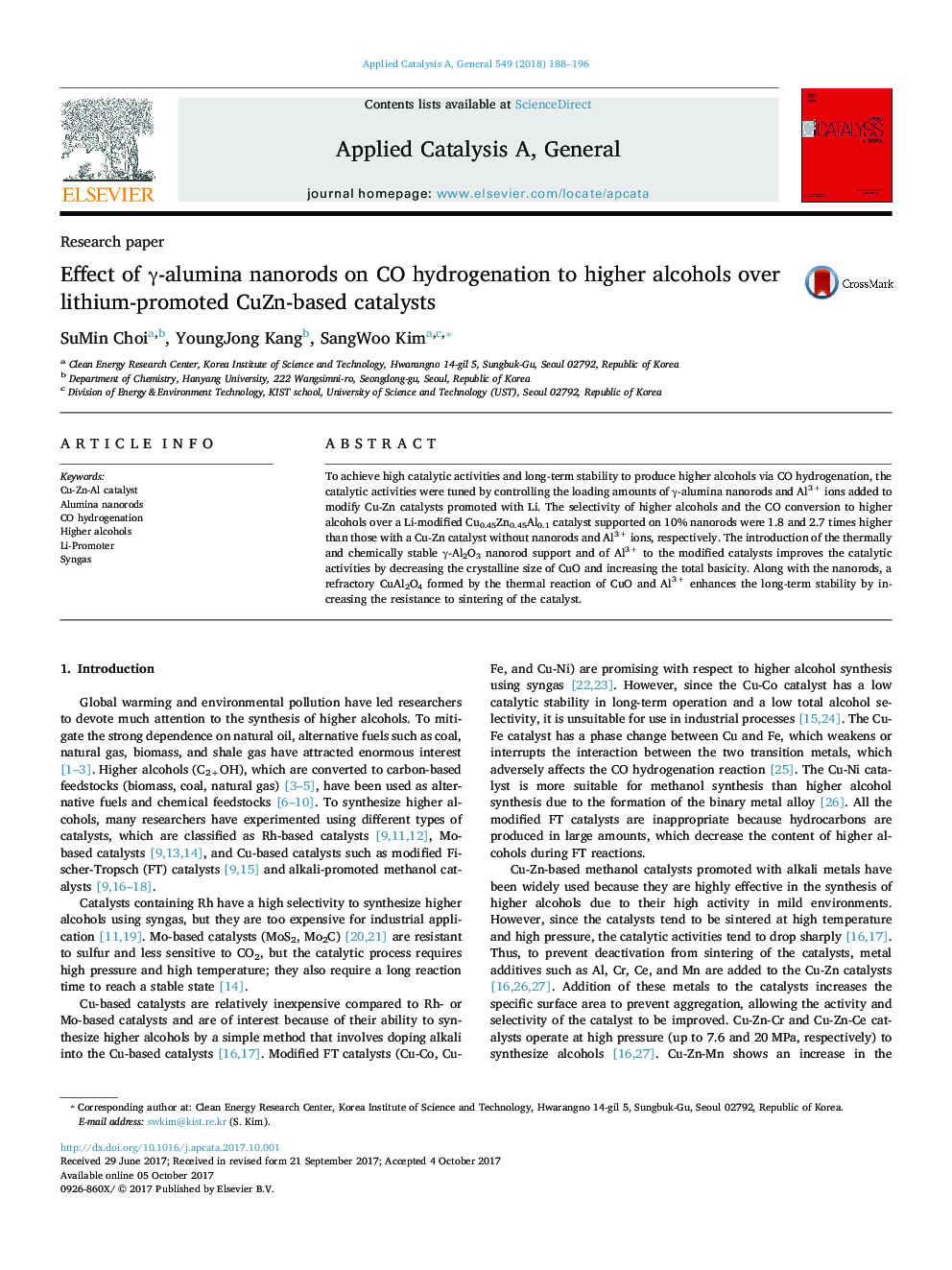| Article ID | Journal | Published Year | Pages | File Type |
|---|---|---|---|---|
| 6453213 | Applied Catalysis A: General | 2018 | 9 Pages |
â¢The introduction of γ-Al2O3 nanorods and Al3+ ions to a Li-promoted Cu-Zn-based catalyst promotes CO hydrogenation to higher alcohols.â¢The enhanced catalytic performance of the catalyst is due to the reduction in CuO crystallite size and due to the increase in basicity.â¢A Li-Cu0.45Zn0.45Al0.1 catalyst supported on γ-Al2O3 nanorods is the most optimized for the synthesis of 2-methyl branched alcohols among the higher alcohol products.â¢The modified catalyst exhibits excellent thermal stability over long-term reactions due to the sintering resistance of nanorods and a refractory CuAl2O4.
To achieve high catalytic activities and long-term stability to produce higher alcohols via CO hydrogenation, the catalytic activities were tuned by controlling the loading amounts of γ-alumina nanorods and Al3+ ions added to modify Cu-Zn catalysts promoted with Li. The selectivity of higher alcohols and the CO conversion to higher alcohols over a Li-modified Cu0.45Zn0.45Al0.1 catalyst supported on 10% nanorods were 1.8 and 2.7 times higher than those with a Cu-Zn catalyst without nanorods and Al3+ ions, respectively. The introduction of the thermally and chemically stable γ-Al2O3 nanorod support and of Al3+ to the modified catalysts improves the catalytic activities by decreasing the crystalline size of CuO and increasing the total basicity. Along with the nanorods, a refractory CuAl2O4 formed by the thermal reaction of CuO and Al3+ enhances the long-term stability by increasing the resistance to sintering of the catalyst.
Graphical abstractDownload high-res image (209KB)Download full-size image
